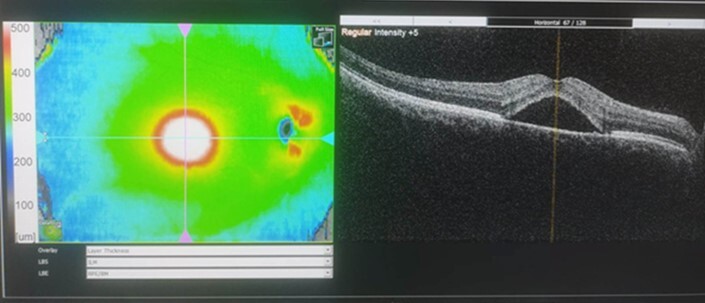Current issue
About the Journal
Scientific Council
Editorial Board
Regulatory and archival policy
Code of publishing ethics
Publisher
Information about the processing of personal data in relation to cookies and newsletter subscription
Archive
For Authors
For Reviewers
Contact
Reviewers
Annals reviewers in 2023
Annals reviewers in 2022
Annals reviewers in 2021
Annals reviewers in 2020
Annals reviewers in 2019
Annals reviewers in 2018
Annals reviewers in 2017
Annals reviewers in 2016
Annals reviewers in 2015
Annals reviewers in 2014
Annals reviewers in 2013
Annals reviewers in 2012
Links
Sklep Wydawnictwa SUM
Biblioteka Główna SUM
Śląski Uniwersytet Medyczny w Katowicach
Privacy policy
Accessibility statement
Reviewers
Annals reviewers in 2023
Annals reviewers in 2022
Annals reviewers in 2021
Annals reviewers in 2020
Annals reviewers in 2019
Annals reviewers in 2018
Annals reviewers in 2017
Annals reviewers in 2016
Annals reviewers in 2015
Annals reviewers in 2014
Annals reviewers in 2013
Annals reviewers in 2012
Micropulse laser therapy in chronic idiopathic central serous chorioretinopathy in right eye of 38-year-old patient – case report
1
Students’ Scientific Society, Department of Ophthalmology, Faculty of Medical Sciences in Katowice, Medical University of Silesia, Katowice, Poland
2
Department of Ophthalmology, Faculty of Medical Sciences in Katowice, Medical University of Silesia, Katowice, Poland
Corresponding author
Maciej Michalik
Studenckie Koło Naukowe, Klinika Okulistyki, Wydział Nauk Medycznych w Katowicach, ul. Ceglana 35, 40-514 Katowice
Studenckie Koło Naukowe, Klinika Okulistyki, Wydział Nauk Medycznych w Katowicach, ul. Ceglana 35, 40-514 Katowice
Ann. Acad. Med. Siles. 2024;78:108-112
KEYWORDS
TOPICS
ABSTRACT
INTRODUCTION: Central serous chorioretinopathy (CSC) is a disease characterized by idiopathic serous elevation of the sensory layer of the retina in the proximity of the macula. This phenomenon predominantly manifests unilaterally, particularly in young males who exhibit increased susceptibility to stress. The optimal treatment strategy for CSC remains questionable due to a diverse range of symptoms, variable clinical courses, an overall limited understanding of CSC’s pathophysiology and a lack of consensus on classification systems. Recently, there has been growing adoption of micropulse laser therapy in CSC treatment, allowing targeted action on retinal pigment epithelium, without causing damage to nearby photoreceptors. The aim was to evaluate the use of micropulse laser therapy in chronic CSC.
DESCRIPTION AND RESULTS: A 38-year-old patient with recurrent CSC in the right eye, previously treated locally with eye drops and oral medication for over a year, underwent evaluation. At the time of diagnosis, the patient exhibited
a visual acuity of 0.63, intraocular pressure of 19 mmHg, and a central retinal thickness of 530 µm, as measured by optical coherence tomography (OCT). Fluorescein angiography (FA) confirmed the diagnosis, leading to the qualification for retinal micropulse laser therapy. Following the treatment, a subsequent FA test revealed improvement in the patient’s clinical condition, with a vision acuity of 1.0 and intraocular pressure reduced to 17 mmHg. Additionally, the central retinal thickness measured by OCT decreased to 299 µm.
CONCLUSIONS: The use of micropulse laser therapy demonstrates the potential to achieve sustainable clinical effects in patients with recurrent CSC.
REFERENCES (10)
1.
Nicholson B., Noble J., Forooghian F., Meyerle C. Central serous chorioretinopathy: update on pathophysiology and treatment. Surv. Ophthalmol. 2013; 58(2): 103–126, doi: 10.1016/j.survophthal.2012.07.004.
2.
Manayath G.J., Ranjan R., Shah V.S., Karandikar S.S., Saravanan V.R., Narendran V. Central serous chorioretinopathy: Current update on pathophysiology and multimodal imaging. Oman J. Ophthalmol. 2018; 11(2): 103–112, doi: 10.4103/ojo.OJO_75_2017.
3.
Semeraro F., Morescalchi F., Russo A., Gambicorti E., Pilotto A., Parmeggiani F., Bartollino S., Costagliola C. Central serous chorioretinopathy: pathogenesis and management. Clin. Ophthalmol. 2019; 13: 2341–2352, doi: 10.2147/OPTH.S220845.
4.
Salehi M., Wenick A.S., Law H.A., Evans J.R., Gehlbach P. Interventions for central serous chorioretinopathy: a network meta-analysis. Cochrane Database Syst. Rev. 2015; 2015(12): CD011841, doi: 10.1002/14651858.CD011841.pub2.
5.
Gawęcki M. Micropulse laser treatment of retinal diseases. J. Clin. Med. 2019; 8(2): 242, doi: 10.3390/jcm8020242.
6.
Nicolò M., Desideri L.F., Vagge A., Traverso C.E. Current pharmacological treatment options for central serous chorioretinopathy: A review. Pharmaceuticals (Basel) 2020; 13(10): 264, doi: 10.3390/ph13100264.
7.
Hanumunthadu D., Tan A.C.S., Singh S.R., Sahu N.K., Chhablani J. Management of chronic central serous chorioretinopathy. Indian J. Ophthalmol. 2018; 66(12): 1704–1714, doi: 10.4103/ijo.IJO_1077_18.
8.
Arsan A., Kanar H.S., Sonmez A. Visual outcomes and anatomic changes after sub-threshold micropulse yellow laser (577-nm) treatment for chronic central serous chorioretinopathy: long-term follow-up. Eye (Lond) 2018; 32(4): 726–733, doi: 10.1038/eye.2017.293.
9.
Maruko I., Koizumi H., Hasegawa T., Arakawa H., Iida T. Subthreshold 577 nm micropulse laser treatment for central serous chorioretinopathy. PLoS One 2017; 12(8): e0184112, doi: 10.1371/journal.pone.0184112.
10.
Zhou L., Lai K., Jin L., Huang C., Xu F., Gong Y. et al. Subthreshold micropulse laser vs. conventional laser for central serous chorioretinopathy: A randomized controlled clinical trial. Front. Med. (Lausanne) 2021; 8: 682264, doi: 10.3389/fmed.2021.682264.
The Medical University of Silesia in Katowice, as the Operator of the annales.sum.edu.pl website, processes personal data collected when visiting the website. The function of obtaining information about Users and their behavior is carried out by voluntarily entered information in forms, saving cookies in end devices, as well as by collecting web server logs, which are in the possession of the website Operator. Data, including cookies, are used to provide services in accordance with the Privacy policy.
You can consent to the processing of data for these purposes, refuse consent or access more detailed information.
You can consent to the processing of data for these purposes, refuse consent or access more detailed information.




